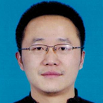The strategies of using Chinese language in cosmetic advertising through the Taobao online marketplace
Abstract
This study aimed to 1) analyze the information structure of texts concerning facial beauty in Chinese cosmetics advertisements, and 2) examine linguistic strategies employed within the advertisements. Language strategies in 150 Chinese cosmetic product advertisements from Taobao were analyzed, employing critical discourse analysis concepts as proposed by Norman Fairclough and Teun Adrianus van Dijk. By exploring the advertising language, the study offered valuable insights into the persuasive techniques used in the cosmetics industry. It categorized the strategies into semantic and discourse-pragmatic. Semantic strategies involved descriptive verbs, intensifiers, negation, and word formation through pinyin transliteration. Discourse-pragmatic strategies included presuppositions, figures of speech, claims, and rhetorical questions. These strategies mirrored beauty values in Chinese society, implying beauty was achievable through the products advertised. The study highlighted the significant impact of language strategies in forming beauty ideals, influencing consumer beliefs, and motivating the pursuit of beauty standards. This analysis of cosmetic advertising in China showcased the influential role of language in shaping societal views and consumer behavior.
References
[1]Bouvier, G. (2015). What is a discourse approach to Twitter, Facebook, YouTube and other social media: connecting with other academic fields? Journal of Multicultural Discourses, 10(2), 149–162. https://doi.org/10.1080/17447143.2015.1042381
[2]Britton, A. (2012). The beauty industry’s influence on women in society. University of New Hampshire.
[3]Chamwong, W., Prayngarm, K., Paichit, P. (2015). The stratigies of using language in cosmetics advertising [Master’s thesis]. Rajamangala University of Technology Rattanakosin.
[4]Chaipraditkul, N. (2013). Thailand: beauty and globalized self-identity through cosmetic therapy and skin lightening. Ethics in Science and Environmental Politics, 13(1), 27–37. https://doi.org/10.3354/esep00134
[5]Cortese, A. J. (2004). Provocatueur: Images of women and minorities in advertising. Rowman & Littlefield Publishers.
[6]Coupland, J. (2007). Gendered discourses on the ‘problem’ of ageing: consumerized solutions. Discourse & Communication, 1(1), 37–61. https://doi.org/10.1177/1750481307071984
[7]Fairclough, N. (1995). Discourse and social change, 2nd ed. Polity Press.
[8]Fairclough, N. (2010). Critical discourse analysis: The critical study of language, 2nd ed. Routledge.
[9]Hansen, A., & Machin, D. (2008). Visually branding the environment: climate change as a marketing opportunity. Discourse Studies, 10(6), 777–794. https://doi.org/10.1177/1461445608098200
[10]Jin, Y., & Tay, D. (2023). Offensive, hateful comment: A networked discourse practice of blame and petition for justice during COVID-19 on Chinese Weibo. Discourse Studies, 25(1), 3–24. https://doi.org/10.1177/14614456221129485
[11]Kaewjungate, W. (2010). The ideology of masculinity in men’s advertising discourse in men’s magazines [Master’s thesis]. Chulalongkorn University.
[12]Ostertag, S. F. (2020). A Cultural Sociology of Social Media: Social Drama, Cultural Affordances and Blogging in the Wake of Hurricane Katrina. Cultural Sociology, 15(1), 113–133. https://doi.org/10.1177/1749975520946609
[13]Pong-udom, R. (2005) The relationship between language and values on beauty: A study of advertising discourse on cosmetics in Thai [Master’s thesis]. Chulalongkorn University.
[14]Teo, P., & Ren, S. (2019). Marketization of universities in China: A critical discourse analysis of the university president’s message. Discourse & Communication, 13(5), 539–561. https://doi.org/10.1177/1750481319856203
[15]van Dijk, T. A. (2000). Ideology and discourse: A multidisciplinary introduction. Available online: http://www.discursos.org/unpublished%20articles/Ideology%20and%20discourse.pdf (accessed on 15 January 2023).
[16]van Dijk, T. A. (2003). Critical discourse analysis. In: Schiffrin D, Tannen D and Hamilton HE (editors). The handbook of discourse analysis. Blackwell Publishers. pp.352–363.
[17]van Dijk, T. A. (2008). Discourse and context: A sociocognitive approach. Cambridge University Press.
[18]Webretailer. (2023). Online marketplaces in China: The land of the giants. Available online: https://www.webretailer.com/marketplaces-worldwide/online-marketplaces-china/ (accessed on 15 January 2023).
[19]Wasusirikul, P., Stasiewski, R. H. (2016). Growing of China online shopping markets. UTK Research Journal, 10(2), 9–20.
[20]Wodak, R. (2001). Methods of critical discourse analysis. Sage Publication.
Copyright (c) 2024 Chatuwit Keawsuwan, Benjamaporn Ruechai, Pantipa Chanpeng

This work is licensed under a Creative Commons Attribution 4.0 International License.
The author(s) warrant that permission to publish the article has not been previously assigned elsewhere.
Author(s) shall retain the copyright of their work and grant the Journal/Publisher right for the first publication with the work simultaneously licensed under:
OA - Creative Commons Attribution License (CC BY 4.0). This license allows for the copying, distribution and transmission of the work, provided the correct attribution of the original creator is stated. Adaptation and remixing are also permitted.
This broad license intends to facilitate free access to, as well as the unrestricted reuse of, original works of all types.









_%E5%89%AF%E6%9C%AC1.png)

